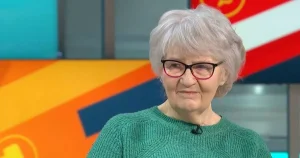Ofgem energy price cap goes up again – what it means for your bills

Millions of people will see their energy bill rise again this winter after Ofgem announced its new price cap.
The price cap is rising by 1.2% from January 1. This means the average dual fuel household paying by direct debit will see their annual bill go up from £1,717 a year to £1,738 – an increase of £21. The rise will come into effect during the coldest months and at a time when millions of pensioners have been stripped of their Winter Fuel Payment, worth up to £300.
It is also the second increase in energy bills in recent months, after the price cap went up by 10% – or an average of £149 – in October. Ofgem updates its price cap every three months, so the new rates will remain in place until March 31, when it will then be revised again.

(
Image:
Getty Images/Westend61)
The price cap for someone paying by pre-payment meter is rising from £1,669 a year to £1,690, while for someone paying on receipt of bill, the figure is going up from £1,829 a year to £1,851. The price cap covers around 26 million households in England, Wales and Scotland.
But despite what its name suggests, the price cap does not actually limit how much you can pay for energy. If you use more energy, you'll pay more – or use less energy, and your bill will be less.
Tim Jarvis, director general of markets at Ofgem, said: “While today’s change means the cap has remained relatively stable, we understand that the cost of energy remains a challenge for too many households. However, with more tariffs coming into the market, there are ways for customers to bring their bill down so please shop around and look at all the options.
“Our reliance on volatile international markets – which are affected by factors such as events in Russia and the Middle East – means the cost of energy will continue to fluctuate. So it’s more important than ever to stay focused on building a renewable, home-grown energy system to bring costs down and give households stability.
“In the short term though, anyone struggling with bills should speak to their supplier to make sure they’re getting the help they need and look around to make sure they’re on the best, most affordable deal for them.”
Are you worried about the energy price cap? Vote in our poll HERE to have your say.
What is the Ofgem price cap?
The Ofgem price cap does not put a limit on how much you can pay for energy – instead, it sets the maximum unit price you can be charged for gas and electricity, as well as the maximum daily standing charge, which is a fixed fee that you pay to be connected to the grid.
This means your bill is still based on the actual amount of energy you use. The headline price cap figure represents what the average billpayer will pay. Ofgem estimates that the average household consumes 2,700 kwh of electricity and 11,500 kWh of gas over 12 months.
But again, if your energy usage is a lot less than this, then your bill will be lower than the main price cap figure – while high energy users will pay more. There are other factors to take into account. Unit rate prices vary by region, so your location can also effect your bill, and there are different rates for prepayment customers and those who pay on receipt of bill.
The headline price cap rate is for someone with typical energy usage who pays by direct debit. Confusingly, the energy price cap figure represents a yearly bill, but it is updated every three months so Ofgem can reflect changing wholesale costs.
Get the best deals and tips from Mirror Money
WHATSAPP GROUP: Get money news and top deals straight to your phone by joining our Money WhatsApp group here. We also treat our community members to special offers, promotions, and adverts from us and our partners. If you don’t like our community, you can check out any time you like. If you’re curious, you can read our Privacy Notice.
NEWSLETTER: Or sign up to the Mirror's Money newsletter here for all the best advice and shopping deals straight to your inbox.
Who is affected by the Ofgem price cap?
There are 26 million people who are on the price cap. You are covered by the price cap if you're on a standard variable rate (SVR) tariff – sometimes called a default or variable tariff. These are normally people who are not locked into a fixed deal, or those who didn't switch to a new tariff when their previous fix expired.
You may also roll onto an SVR tariff when you move properties. All different types of payment methods can be covered by the price cap, including direct debit, prepayment meter and paying on receipt of bill. You can contact your current energy supplier to see what type of tariff you're on, and to check you're not being charged above the maximum rates allowed under the price cap.
EE is axing major service used by people with Apple devices and confirms end date
UK households to get £450 payments for free – but there's a major catch
How much are the unit rates and standing charges?
The unit rate for gas is rising from 6.24p per kilowatt hour (kWh) to 6.34p per kWh, while the standing charge will change from 31.66p a day to 31.65p. The unit rate for electricity is going up from 24.50p per kWh to 24.86p per kWh. The standing charge for electricity is going down marginally from 60.99p a day to 60.97p a day. There are different unit rates and standing charges for prepayment customers and those who pay on receipt of bills.
How do I find out my new energy bill?
If you're a direct debit customer, you can estimate how much your energy bill will increase from January using our calculator below. But as a general rule of thumb, if you spent £100 each month on gas and electricity, your new bill would be £101.20.
Will energy bills keep rising?
There is some good news, as new forecasts from Cornwall Insight predict energy bills will fall slightly by 1.4% in April to £1,713 per year for a typical dual fuel user, before dipping slightly again in July. Keep in mind, there is still plenty of time before the April price cap gets announced – so these predictions will change between now and then.
Should I fix into an energy deal now?
Martin Lewis has urged households that are on a default tariff to check if they can save money by switching to a fixed energy deal. He said: "The cheapest fixed tariffs available right now are around 5% LESS than the current price cap. Therefore the simple thing to do is lock into a fix now to save money and guarantee no future hikes."
Uswitch flagged the current cheapest fix as Outfox the Market, Fix'd Dual Nov24 v2.0, which is priced at £1,606 a year for an average household with typical usage. The comparison site also recommended looking at EDF Energy Simply Fixed Direct 1Yr Jan26 and British Gas Fixed Tariff 18M, which are both set at £1,608 a year.
Richard Neudegg, director of regulation at Uswitch, said: “Right now, the cheapest 12-month fix is meaningfully lower than the January price cap and would save a household with typical usage up to £132 per year against these upcoming rates. Customers should run a comparison to see what savings they can make. There are lots of fixed deals on the market right now, the majority of which beat the current price cap.”
Ofgem also recommends checking you're getting all the benefits and help that you're entitled to. Tim Jarvis, director general of markets at Ofgem, said: "Energy should not be considered a luxury. It’s a necessity. Going without energy can have major consequences for households – on health, on housing and on stress and anxiety levels.
"That’s why it’s critical that people understand what help is available if they are struggling. Anyone having difficulties paying their bills should, first and foremost, make sure they have access to all the benefits they are entitled to – particularly Pension Credit – and contact their energy company for help and support."
How does Ofgem calculate its price cap?
The largest cost that makes up the price cap is wholesale energy, which is what energy suppliers pay for gas and electricity. The assessment period for wholesale energy prices for the January 2025 price cap was from August 19, 2024 to November 15, 2024. There are other elements that are taken into account as well.
Ofgem looks at the cost of maintaining pipes and wires that carry gas and electricity, network and operating costs, as well as VAT, payment method allowances and profits for the energy supplier. Ofgem will announce its next price cap, which will come into force from April 1 next year, by February 25, 2025.
Why are energy bills still so high?
Energy prices have fallen since their peak in summer 2023, but are still far higher than they used to be. They first started going up due to higher demand after the coronavirus pandemic, when lockdown measures were eased, and spiked when the conflict between Russia and Ukraine broke out.
Energy analysts at Cornwall Insight told the BBC higher prices are "the new normal" due to "geopolitical tensions, bad weather and maintenance taking place on Norwegian gas infrastructure" in what will be disappointing news for households. At their peak, the price cap rose about £4,000 in the winter of 2023 but the Government introduced a temporary Energy Price Guarantee which meant prices were discounted to £2,500.
I'm a Lego fan and these are the best Amazon Black Friday deals with up to 45% off sets



